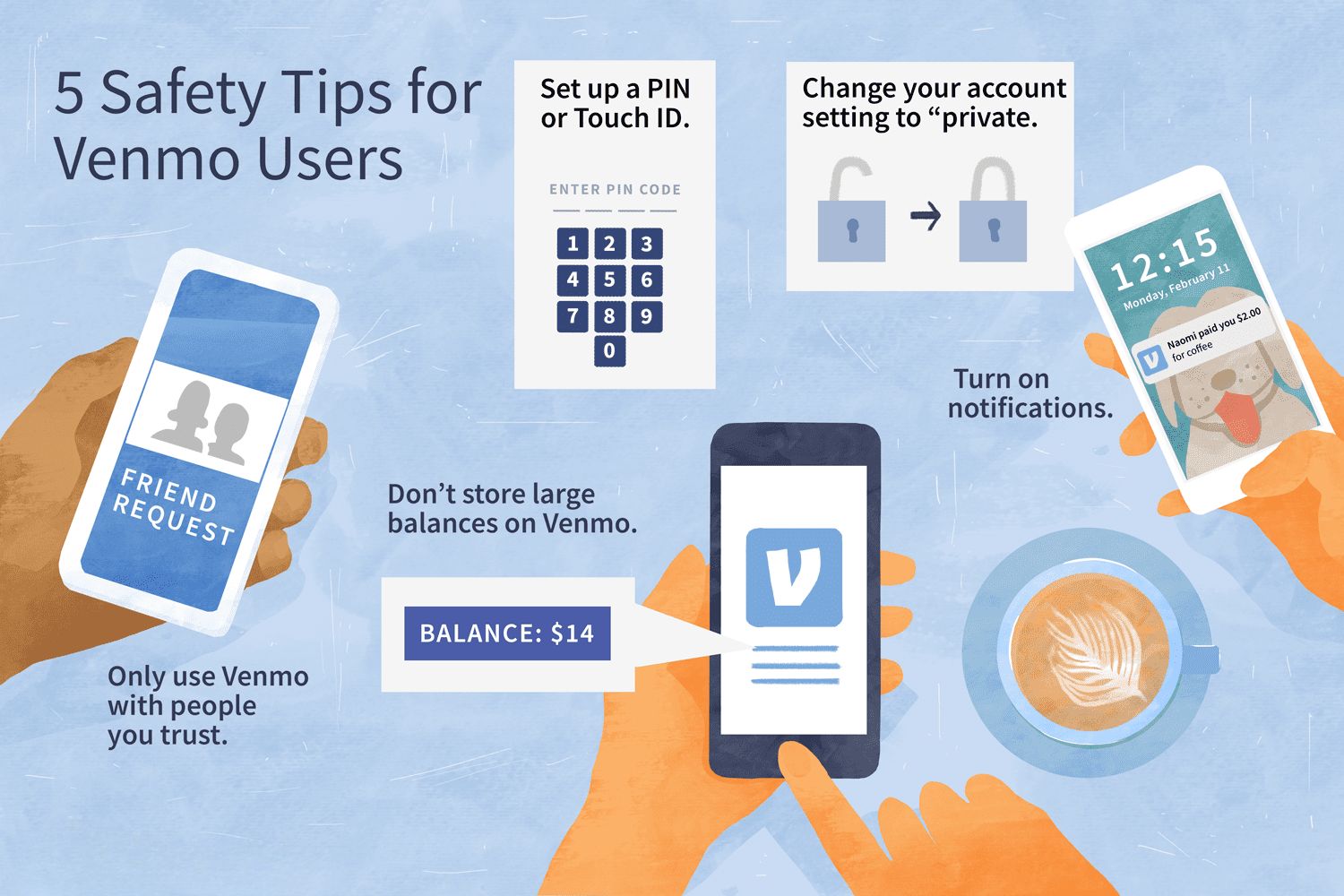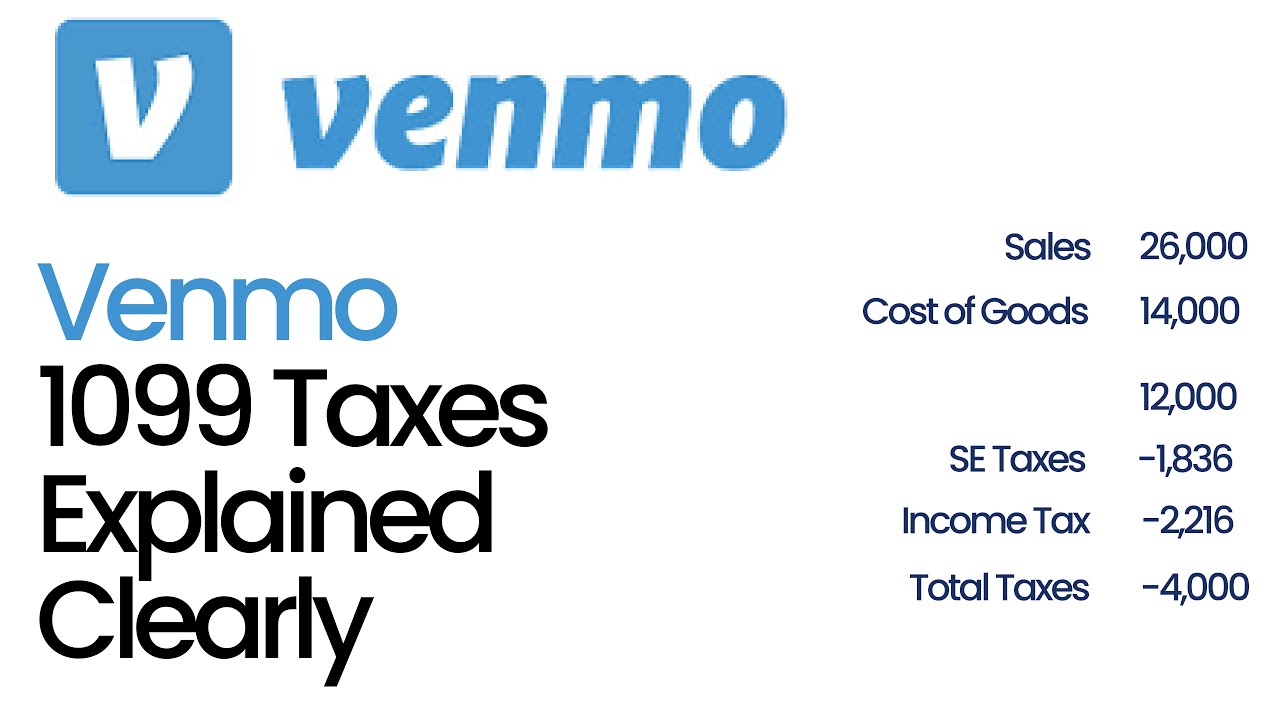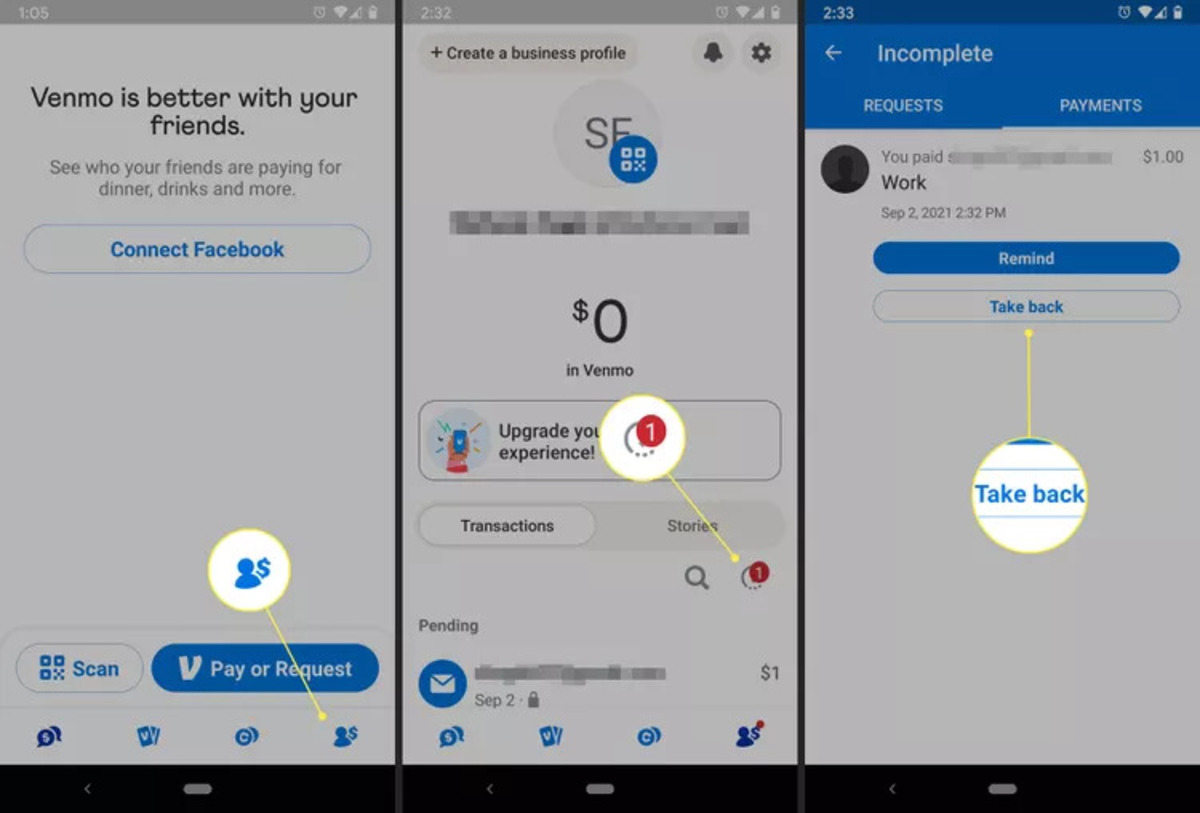Introduction
Venmo has quickly become one of the most popular mobile payment platforms, revolutionizing the way people transfer money to friends, family, and businesses. With its user-friendly interface and convenient features, Venmo has become an indispensable tool for individuals looking for a hassle-free way to split bills, pay for goods and services, and even make charitable donations. In this article, we’ll explore what Venmo is and how it works, as well as provide tips and insights on getting the most out of this convenient digital payment platform.
Venmo is a mobile payment service owned by PayPal that allows users to send, receive, and request money from their friends and contacts. The platform was introduced in 2009 and gained massive popularity due to its simplicity and social features. With Venmo, users can easily make payments through an app on their smartphones, eliminating the need for cash or physical credit cards.
One of the key features that sets Venmo apart is its social component. Users can connect with their friends and contacts, and each payment made or received can be accompanied by a social feed-like comment or emoji. This encourages a sense of community and makes payment transfers more personal and engaging.
Venmo operates through a digital wallet system, which allows users to link their bank accounts, debit cards, or credit cards to their Venmo account. This makes it easy to transfer funds securely, without the need to handle physical cash or disclose sensitive financial information.
In the following sections, we’ll delve into the specifics of how Venmo works, including setting up an account, adding funds, and making transactions. We’ll also discuss the fees and limits associated with Venmo, as well as the security measures in place to protect users’ information. Additionally, we’ll explore some of the social features that make Venmo a unique and enjoyable payment platform.
What is Venmo?
Venmo is a mobile payment platform that allows users to send, receive, and request money through a simple and convenient app. It was founded in 2009 and acquired by PayPal in 2013, quickly becoming a popular choice for individuals looking to make fast and easy transactions.
At its core, Venmo is a digital wallet that enables users to connect their bank accounts, debit cards, or credit cards to their Venmo account. This allows them to transfer funds securely and seamlessly, without the need for physical cash or traditional payment methods.
One of the distinguishing features of Venmo is its social aspect. Users can connect with friends and contacts on the platform and make payments visible to their network. Each transaction can be accompanied by a comment, emoji, or even shared publicly to add a personal touch to the payment experience. This social component has made Venmo particularly popular among younger users as it adds a fun and interactive element to money transfers.
Venmo’s user interface is designed with simplicity and ease-of-use in mind. The app has a clean and intuitive design, making it straightforward for users to navigate and complete transactions quickly. With just a few taps, users can send money to a friend, split a bill, or pay for goods and services with participating merchants.
Although initially known for its peer-to-peer payment functionality, Venmo has expanded its services to include online and in-app purchases. Users can now make payments directly on select websites and apps that support Venmo as a payment option. This versatility has made Venmo a popular choice for various types of transactions.
Overall, Venmo simplifies the process of transferring money between individuals or businesses. It eliminates the need for physical cash or checks, streamlining the payment process and offering a convenient and secure alternative. Whether you want to split the bill at a restaurant, pay a friend for concert tickets, or shop online hassle-free, Venmo provides a user-friendly platform to make your financial transactions a breeze.
How Does Venmo Work?
Venmo operates through a simple and intuitive process that allows users to send and receive money with ease. Here’s a step-by-step breakdown of how Venmo works:
- Sign up: To begin using Venmo, you’ll need to download the app and create an account. You can sign up with your email address or connect your Facebook account for a quicker registration process.
- Link your payment method: Once you have an account, you’ll need to link a payment method to your Venmo account. This can be a bank account, debit card, or credit card. Venmo utilizes your linked payment method to transfer funds between accounts securely.
- Add friends: Venmo allows you to connect with friends and contacts, making it easy to find and interact with people you know. You can search for friends by their name, username, phone number, or email address within the app.
- Send and receive money: When you want to send money to someone, simply open the Venmo app, select the person you wish to pay, and enter the amount. You can also include a brief description of the transaction to provide context or add a personal touch. To receive money, provide your username or Venmo handle to the sender, who can then initiate the transfer.
- Security measures: Venmo prioritizes the security of user information and transactions. The platform uses encryption to protect sensitive data, and it offers options such as two-factor authentication for an added layer of security. Additionally, Venmo provides the ability to set privacy settings, allowing you to control who can see your transactions and social feed.
- Transaction history: Venmo keeps a record of all your transactions, allowing you to easily view and track your payment history. This can be useful for personal budgeting or keeping tabs on shared expenses.
- Social features: Venmo incorporates social elements, allowing you to engage with your friends and contacts when making payments. You can like and comment on transactions, adding a fun and interactive aspect to the payment process.
- Withdraw funds: If you have a balance in your Venmo account, you can transfer the funds to your linked bank account. Withdrawals typically take one to three business days to process, depending on your bank.
Overall, Venmo offers a convenient and user-friendly way to send and receive money digitally. Whether you’re splitting a bill, paying a friend back, or making purchases, Venmo simplifies the transaction process and provides a secure platform for your financial needs.
Setting Up Your Venmo Account
Setting up a Venmo account is a quick and straightforward process that allows you to start sending and receiving money in no time. Here’s a step-by-step guide to setting up your Venmo account:
- Download the app: Start by downloading the Venmo app from the Google Play Store or the Apple App Store. The app is available for both iOS and Android devices.
- Sign up: Once you have the app installed, open it and tap on the “Sign Up” button. You can choose to sign up with your email address or connect your Facebook account to expedite the registration process.
- Verify your phone number: To ensure the security of your account, Venmo will ask you to verify your phone number. Simply enter your phone number, and Venmo will send you a verification code. Enter the code to proceed.
- Create a strong password: Next, create a secure password for your Venmo account. Make sure to choose a combination of letters, numbers, and symbols to enhance your account’s security.
- Add a profile picture: Venmo allows you to personalize your account by adding a profile picture. You can either take a new photo or choose one from your device’s photo library.
- Link a funding source: To start using Venmo, you’ll need to link a funding source, such as a bank account, debit card, or credit card. Venmo uses this information to transfer funds securely between accounts. Follow the prompts to enter your bank account or card details and complete the linking process.
- Set up your security options: Venmo provides several security features to protect your account. Set up a PIN code or enable biometric authentication (e.g., fingerprint or facial recognition) to ensure only authorized access to your account.
- Customize your privacy settings: Venmo offers privacy settings that let you control who can see your transactions and social feed. You can choose to make your transactions public, visible to friends, or keep them entirely private. Access the privacy settings in the app’s settings menu.
- Add friends: To make Venmo transactions more interactive, you can connect with friends and contacts. Use the app’s search function to find and add friends by their names, usernames, phone numbers, or email addresses.
Once you’ve completed these steps, your Venmo account is ready to use. You can start sending and receiving money, splitting bills with friends, and enjoying the convenient features that Venmo has to offer.
Adding Funds to Your Venmo Account
Adding funds to your Venmo account is a simple process that allows you to have a balance available for sending payments or making purchases. Here are a few ways you can add funds to your Venmo account:
- Link a bank account: One of the most common ways to add funds is by linking your bank account to your Venmo account. By connecting your bank account, you can transfer money from your bank to Venmo, making it available for use. To link your bank account, navigate to the “Settings” section of the Venmo app and follow the prompts to add your banking information.
- Use a debit or credit card: If you prefer to use a card to add funds, Venmo accepts linked debit or credit cards as a payment method. Similar to linking a bank account, you can enter your card details in the Venmo app under the “Settings” section to add funds to your account.
- Receive payments: Another way to add funds to your Venmo account is by receiving payments from your friends or contacts. When someone sends you money through Venmo, it will be added to your Venmo balance, ready to be spent or withdrawn. Simply provide your Venmo username or handle to the sender to initiate the transfer.
- Transfer from another Venmo user: Venmo offers a convenient option to transfer funds between Venmo users. If you have a friend or contact who has a Venmo balance, they can transfer money directly to your Venmo account. This can be useful if you need to quickly add funds or even out expenses between friends.
- Withdraw from Venmo account: If you have a balance in your Venmo account and wish to remove the funds, you can initiate a withdrawal to your linked bank account. Venmo allows you to transfer your available balance to your bank, typically taking one to three business days to process.
It’s important to note that adding funds to your Venmo account is not a requirement for using the platform. You can still make payments directly from your linked bank account or debit/credit card without maintaining a separate Venmo balance.
When adding funds to your Venmo account, ensure that you have linked a trusted payment method and follow Venmo’s guidelines for security. By having a balance available, you can enjoy the convenience of making payments and purchases using your Venmo account without relying solely on external sources for each transaction.
Sending and Receiving Money with Venmo
Venmo makes it effortless to send and receive money from friends, family, and even businesses. Whether you’re splitting a bill, repaying a loan, or receiving payment for goods or services, Venmo provides a convenient and reliable platform for these transactions. Here’s how you can send and receive money using Venmo:
Sending Money:
- Open the Venmo app on your smartphone and sign in to your account.
- On the main screen, tap the “Pay or Request” button to initiate a payment.
- Enter the username, email, phone number, or scan the QR code of the recipient you want to send money to.
- Specify the amount you wish to send and include a brief description or purpose of the payment.
- Review the details and tap “Pay” to confirm the transaction.
Once the transaction is completed, the funds will be deducted from your Venmo balance or the linked funding source (e.g., bank account or card) you selected for the payment.
Receiving Money:
- When someone sends you money through Venmo, you will receive a notification in the app and an email if enabled.
- Open the Venmo app, and on the main screen, you will see the transaction reflecting the received payment.
- The funds will be added to your Venmo balance, and you can use it for future payments or withdraw it to your linked bank account.
When sending or receiving money with Venmo, it’s important to keep a few things in mind:
- Transaction descriptions: Adding a brief description to your transactions can help provide context or remind the recipient of the purpose of the payment. It’s a good practice to include details such as the split bill amount, event name, or any relevant information.
- Payment privacy: If you prefer to keep your transactions private, you have the option to adjust your privacy settings. You can choose to make your transactions visible to friends, have them appear publicly, or keep them completely private.
- Transaction history: Venmo keeps a record of all your transactions, allowing you to easily refer back to previous payments. You can access your transaction history within the app and filter it by various categories such as date, recipient, or amount.
By using Venmo’s user-friendly interface and secure platform, you can send and receive money with confidence, knowing that your transactions are processed quickly and efficiently. Whether you’re splitting expenses with friends, reimbursing someone, or receiving payments, Venmo simplifies the process, making it convenient to manage your finances digitally.
Venmo Fees and Limits
Venmo provides its users with a convenient platform for sending and receiving money, but it’s essential to be aware of the fees and limits associated with using the service. Here’s what you need to know:
Fees:
Venmo offers free person-to-person transactions when using a linked bank account, debit card, or Venmo balance. However, there is a 3% transaction fee when using a credit card for payments. It’s important to consider this fee when choosing the funding source for your transactions.
Limits:
Venmo imposes certain limits on transaction amounts, which include:
- Weekly transaction limit: By default, new Venmo users have a weekly sending limit of $299.99. However, you can increase this limit by confirming your identity and linking a verified bank account.
- Venmo card spending limit: If you have the Venmo debit card, there is a daily spending limit of $4,999.99 for purchases made with the card.
- Bank transfers: Venmo imposes a daily transfer limit of $19,999.99 for transferring funds from your Venmo balance to your linked bank account.
These limits exist to ensure the security of your Venmo account and prevent unauthorized activity. If you require higher limits, you can contact Venmo support to discuss options for increasing your account’s limits.
It’s crucial to note that Venmo may also impose additional limits or fees for specific actions, such as ATM withdrawals, same-day or instant bank transfers, or expedited check delivery.
Before making transactions or sending large amounts of money through Venmo, it is recommended to review the fees and limits associated with your account carefully. Understanding these details will help you plan your transactions effectively and avoid any surprises or inconveniences.
Be sure to check Venmo’s website or contact their support team if you have specific questions or concerns about fees, limits, or any other aspects of using the Venmo service. Staying informed about the fees and limits ensures that you can make the most of your Venmo experience while managing your finances efficiently.
Venmo Security and Privacy
Venmo places a strong emphasis on security and privacy to ensure the safety of its users’ financial information and transactions. Here are some of the security measures and privacy features that Venmo provides:
Encryption and Data Protection:
Venmo employs encryption technology to safeguard user data, ensuring that sensitive information is transmitted securely. This encryption helps protect your personal and financial details, making it difficult for unauthorized individuals to intercept or access your data.
Two-Factor Authentication:
Venmo offers the option to enable two-factor authentication, adding an extra layer of security to your account. With two-factor authentication, you have to provide a unique verification code sent to your registered phone number or email address in addition to your password when logging into your Venmo account from a new device.
Privacy Settings:
Venmo provides privacy settings that allow you to control the visibility of your transactions and social feed. You can choose to make your transactions public, visible only to your friends, or keep them entirely private. Additionally, you have the option to control who can see your friends list and your personal information.
Fraud Detection and Protection:
Venmo implements sophisticated fraud detection algorithms and monitoring systems to identify and prevent fraudulent activity on its platform. These measures help protect users from unauthorized transactions and suspicious account access.
Account Alerts and Notifications:
Venmo sends notifications and alerts to keep you informed about account activities and changes. You can customize your notification preferences to receive alerts for specific actions, such as receiving payments, withdrawal confirmations, or when someone requests money from you.
Secure Venmo Purchases:
If you use Venmo for in-app or online purchases with participating merchants, Venmo offers Buyer Protection, which provides coverage for eligible items that are not received or are significantly not as described. This added protection offers peace of mind when making purchases through the Venmo platform.
Venmo’s commitment to security and privacy extends beyond these measures, as they continuously update their systems to address emerging threats and vulnerabilities. It’s important to stay vigilant and take steps to protect your Venmo account, such as using strong, unique passwords, keeping your device’s software updated, and being cautious of phishing attempts or suspicious links.
By utilizing Venmo’s security features and following best practices for online security, you can confidently use the platform for your financial transactions, knowing that your personal and financial information is protected.
Venmo’s Social Features
One of the unique aspects of Venmo is its social component, which sets it apart from other mobile payment platforms. Venmo incorporates social features that allow users to connect with friends, add comments to transactions, and share payment activity. Here are the key social features that Venmo offers:
Friend Connections:
Venmo makes it easy to connect with friends and contacts by searching for their usernames, names, phone numbers, or email addresses within the app. Once connected, you can view their transaction history and engage with their payment activity through likes and comments.
Transaction Comments and Emoji:
When making a payment, Venmo lets you include comments, emojis, or even personalized messages to add context or share a fun and lighthearted element to your transactions. This feature allows users to express their personality, add inside jokes, or thank friends for a particular transaction.
Public or Private Transactions:
Venmo offers privacy settings to control the visibility of your transactions. You can choose to make your transactions public, visible only to friends, or keep them entirely private. This flexibility allows you to maintain a desired level of privacy in your financial interactions.
Social Feed:
Venmo’s social feed acts as a timeline showcasing your friends’ public transactions. This feed allows you to discover and engage with the transactions of your friends, bringing a sense of community and connection to the platform. You can like or comment on these transactions, fostering social interactions and creating a more engaging payment experience.
Payment Splits:
If you’ve shared expenses with friends, Venmo makes it easy to split payments directly within the app. This feature simplifies the process of dividing costs and ensures that everyone involved can see the transaction details and contribute their share seamlessly. It eliminates the need for manual calculations or cash exchanges.
Activity Sharing:
Venmo users have the option to share their payment activity publicly, which allows their friends and contacts to see their transaction history. This feature adds transparency and encourages a social element to financial interactions, potentially leading to shared experiences and recommendations.
Venmo’s social features provide a unique and enjoyable aspect to the payment experience. They enable users to stay connected, engage with their friends’ payment activity, and add a personal touch to their own transactions. It introduces a social dynamic that goes beyond the mere act of sending or receiving money, enhancing the overall user experience on the platform.
Tips and Etiquette for Using Venmo
Venmo offers a seamless and user-friendly platform for sending and receiving money, but there are certain tips and etiquette guidelines to keep in mind to enhance your Venmo experience. Here are some tips to make the most of your Venmo usage:
Verify Usernames:
When sending or receiving money on Venmo, it’s crucial to verify the usernames of the intended recipients. Double-check the usernames to ensure accuracy to prevent sending money to the wrong person.
Add Descriptions:
When making payments, adding a brief description can provide context for the transaction. Include relevant information such as the purpose of the payment or the event it’s related to. Clear descriptions help recipients identify the payment and avoid confusion.
Acknowledge Payments:
If someone sends you money through Venmo, it’s good etiquette to acknowledge the payment by liking the transaction or sending a brief thank-you message. This simple gesture shows appreciation and maintains positive relationships with your Venmo connections.
Privacy Considerations:
Be mindful of your privacy settings when making transactions on Venmo. Take time to review and adjust who can see your activity to match your comfort level. It’s important to strike a balance between engagement and privacy based on your preferences.
Splitting Bills:
When splitting bills with friends, Venmo’s “Split” feature can simplify the process. However, ensure that everyone involved is comfortable using Venmo and has their own Venmo account to avoid any complications or inconveniences.
Timely Payments:
Try to make payments promptly after splitting bills or receiving payment requests. Promptness not only demonstrates good etiquette but also helps keep track of expenses and avoids any delays or misunderstandings.
Maintain Communication:
If there are any issues or discrepancies with payments on Venmo, it’s important to communicate with the relevant parties involved. Openly discuss any concerns, misunderstandings, or payment discrepancies to reach a resolution amicably.
Stay Aware of Fees:
Be mindful of the fees associated with using Venmo, particularly if you choose to use a credit card for transactions. Be aware of the potential charges to make informed decisions regarding your payment method.
Be Cautious of Scams:
As with any digital platform, it’s essential to stay vigilant and be cautious of potential scams or phishing attempts on Venmo. Be mindful of suspicious requests, unfamiliar contacts, or unsolicited payment requests. Report any suspicious activity to Venmo support.
By following these tips and adhering to proper Venmo etiquette, you can ensure smooth transactions and maintain positive relationships with your Venmo connections. Enjoy the convenience and social aspects of Venmo while being mindful of privacy considerations, security measures, and respectful communication.
Alternatives to Venmo
While Venmo is a popular and convenient choice for mobile payments, there are various alternatives available that offer similar functionality. Here are some noteworthy alternatives to Venmo:
PayPal:
As the parent company of Venmo, PayPal is an established and widely recognized digital payments platform. With PayPal, users can send and receive money, make online purchases, and even transfer funds internationally. PayPal also offers a range of features and services for businesses, making it a comprehensive alternative to Venmo.
Zelle:
Zelle is a digital payment platform that allows users to send money directly from their bank accounts. It is a collaboration among numerous banks, providing a quick and seamless method for bank-to-bank transfers. Zelle is built into many banking apps, making it easily accessible for users. As it operates directly within the bank’s infrastructure, there is no need for an additional app or third-party service.
Cash App:
Cash App, developed by Square Inc., is another popular choice for mobile payments. It offers features like sending and receiving money, direct deposits, and even a Cash Card that allows users to make purchases using their Cash App balance. Cash App also provides the option to invest in stocks and buy bitcoin, offering additional functionalities for users.
Google Pay:
Google Pay is a mobile payment platform that enables users to make payments with their smartphones. Users can link their bank accounts, credit cards, or debit cards to Google Pay and make secure transactions both online and in physical stores. Google Pay also supports peer-to-peer payments and integrates with other Google services like Gmail and Google Assistant for added convenience.
Apple Pay:
Exclusive to Apple devices, Apple Pay allows users to make payments securely using their iPhone, iPad, or Apple Watch. Apple Pay utilizes Near Field Communication (NFC) technology to enable contactless payments in stores, and it also supports in-app and online purchases. Apple Pay is widely accepted by merchants and offers a seamless and secure payment experience.
Venmo and PayPal are used to facilitate payments while the other alternatives listed above provide a wider range of financial services and integrations. It is essential to consider your specific needs and preferences when choosing an alternative to Venmo. Research the features, fees, and compatibility with your devices to determine the best option that suits your requirements.
Ultimately, the choice of a mobile payment platform depends on individual factors such as user interface preference, compatibility with devices, ease of use, and available features. Exploring these alternatives can help you find the platform that best aligns with your specific needs and complements your digital payment experience.
Conclusion
Venmo has emerged as a popular and user-friendly mobile payment platform, revolutionizing the way individuals send, receive, and request money. With its seamless interface and social features, Venmo offers a convenient and engaging experience that simplifies financial transactions.
In this article, we explored what Venmo is and how it works. We discussed the process of setting up a Venmo account, adding funds, and sending and receiving money. We also delved into the fees and limits associated with Venmo, as well as its security measures and privacy features. Additionally, we explored Venmo’s unique social aspects and provided tips and etiquette for maximizing the Venmo experience.
As we wrap up our exploration of Venmo, it’s important to keep in mind that while Venmo is a popular choice, there are alternative mobile payment platforms available that offer similar functionality. PayPal, Zelle, Cash App, Google Pay, and Apple Pay are all viable options to consider, depending on individual preferences and needs.
Regardless of the platform you choose, it’s essential to prioritize security and privacy when conducting financial transactions. Utilize strong passwords, enable two-factor authentication, and carefully manage your privacy settings to protect your sensitive information.
Lastly, remember to use Venmo responsibly and observe proper etiquette when making transactions. Verify usernames, add descriptions for clarity, acknowledge payments, and communicate openly with other users to maintain positive relationships.
Whether you choose Venmo or another mobile payment platform, these services offer convenient and efficient ways to manage your finances digitally. Embrace the benefits of mobile payments, stay informed about security practices, and enjoy the ease and convenience of sending and receiving money in the digital age.

























